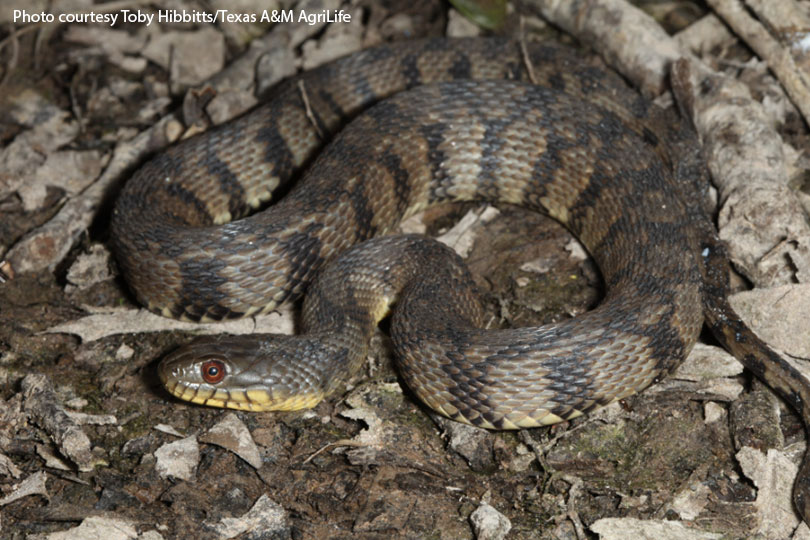By Shelby Shank
Field Editor
With warmer temperatures on the horizon, snakes are becoming more active across Texas, increasing the chances of human encounters.
Experts advise residents to take precautions to minimize negative interactions with these reptiles.
According to Dr. Maureen Frank, Texas A&M AgriLife Extension wildlife specialist, snakes play a vital role in the ecosystem but can pose risks when they come into contact with people or pets.
“Spring is when snakes emerge from their winter hiding spots, searching for food and mates,” Frank said. “Understanding their behavior and taking preventive steps can help reduce unwanted encounters.”
To keep snakes away from homes and recreational areas, it’s recommended to eliminate potential shelter by keeping yards well-maintained, trimming tall grass and removing woodpiles or debris where snakes might hide.
In addition, reduce their food source, as snakes are often drawn to areas with abundant rodents. Homeowners should take steps to control rodent populations by sealing entry points and properly storing food and trash.
Securing homes and structures can further prevent unwanted snake encounters because snakes can slip through small gaps. Sealing cracks around doors, windows and foundations can keep them from getting inside.
Be cautious when spending time outdoors and wear boots and pants in tall grass or rocky areas where snakes may be hiding.
If a snake is spotted, experts advise leaving it alone rather than attempting to kill or remove it, as this increases the risk of a bite.
While most Texas snakes are nonvenomous, it’s important to exercise caution and know how to properly identify snakes.
Common venomous species in Texas include rattle snakes, copperheads, cottonmouths and coral snakes.
Learning where venomous snakes tend to live can help reduce the risk of bites, AgriLife experts said. Copperheads blend easily into leaf litter and can be found in woodlands and grasslands, while cottonmouths prefer to stay near water sources such as creeks, ponds and springs.
Snakes typically bite as a last resort when they feel threatened. If bitten by a snake, immediate medical attention is crucial. Experts advise remaining calm, keeping the affected limb immobilized and seeking emergency care as soon as possible.


Leave A Comment